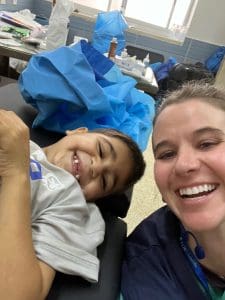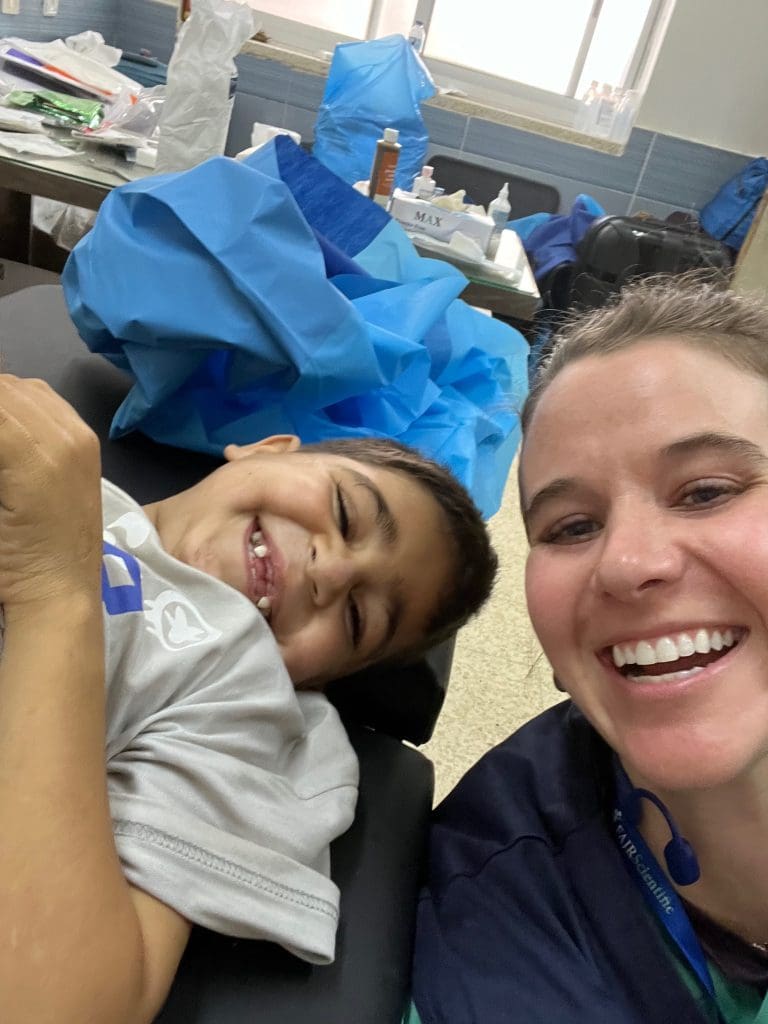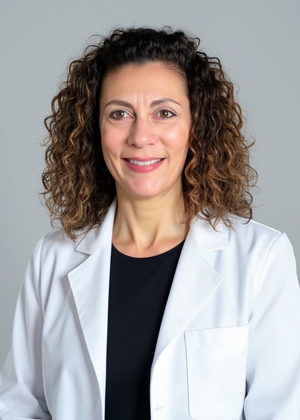While recovering from dysentery, suffering from food insecurity, and treating reused water bottles with chlorine tablets, I crouched in the corner of the library at the European Gaza Hospital. It had been weeks since I had been alone, and the library offered the only place I had been able to find where I could safely sit in solitude. In the light from the hospital courtyard where refugees were cooking and doing laundry, I read the dedication in War Surgery, a book by the International Red Cross Red Crescent Society, which reads, “Our common goal is to protect and assist the victims of armed conflict and to preserve their dignity. This book is dedicated to the victims of situations which, in a better world, would not exist.” My eyes welled as the words on the page took my thoughts through the past several weeks—all the people, all the maggots, the infections, the children with amputations.
Working as a healthcare provider in low-resource settings presents its own set of concerns, but when the location is a conflict zone, an added layer of complications can occur. In peacetime, many healthcare settings have inconsistent and poor access to resources. What does that mean? If your patient needs an ostomy pouch, there may be only 10 left for everyone with no way to know when more may arrive. The normal saline bottles may require access that you’ve never seen before, and you can’t count on electrical pumps and pump brains to dose your medications. How do you order medications in a language you don’t speak when your medical student and translator had to evacuate several days ago with their family and were now building a tent in 100 degree heat on a beach with no clean water, no food, and no toilets? When a country has a health system that is barely keeping everyone afloat during peacetime, conflict causes it to quickly deteriorate, and this does not apply only to developing countries.
When I arrived in Gaza, there were already many waves of death. There were the weapon wounded. We would see people rapidly decompensate and expire from explosive shrapnel and barotrauma injuries where their lungs would break into pieces, shattered like glass. Then there would be those with secondary complications who we may have stabilized from 3rd degree burns, reconstructed with external fixation, or amputated extremities, but they were then suffering from sepsis, osteomyelitis, and infection. On the pediatric ward there was an emaciated man dying from a fully fractured and unreconstructable pelvis who was in excruciating pain, but there was no pain medication. He had sacral and ischial pressure injuries to bone from lack of repositioning. Across from him sat a 12-year-old boy who had found a can of tuna. Hungry to eat, he opened it only to discover it was a bomb. He had had both legs and his right arm amputated, and we were working to save a few fingers that were still on his left arm. The flies buzzed around him, while his family helped reposition him in bed, their own bodies speckled with the shrapnel that had nearly killed their son.
A third type of patient overwhelming the healthcare system were those suffering from environmental and sanitation disruption. During the forced evacuations from their homes, we had children who had skull fractures and brain injuries as a result of falling from atop their belongings, which had been piled high onto carts pulled by donkeys. There were women vomiting and syncopal from febrile diarrhea, conditions that I among many of our own team of healthcare providers experienced.
People will experience some of the same healthcare issues during peacetime as they do during conflict; however, many diseases increase in prevalence due to the impact of stress, sleep deprivation, poor nutrition, and environmental changes. There were people with myocardial infarctions and GI bleeds who needed treatment as well, which was now complicated by their inability to be seen in a timely manner, poor resources, and intermittent access to specialists. There’s also an important group of poor outcomes due to untreated chronic disease. When humanitarian aid is denied entry, or allowed in such small quantities that it can’t make meaningful impact, people with chronic conditions won’t have access to the tools to care for themselves. I saw many diabetic foot ulcers, venous leg ulcers, and weeping legs from heart failure. While medications can help manage many of these chronic conditions, access had been disrupted for the last 7 months.
We had heard that people could acquire medical evacuation for treatment outside of Gaza, but they wouldn’t be able to bring their family with them. Given the complete collapse of the health system, my medical judgement was that really everyone should qualify for medical evacuation.
If you haven’t volunteered in a conflict zone before, but are considering it, here’s my advice:


Start small. Volunteer in underserved and resource poor locations locally, regionally, and nationally. Participate in some international travel to low resource areas so you can learn how to safely travel and protect yourself. The International Red Cross Red Crescent has some very good training modules that you can take.
Be as prepared as possible. When working in a conflict zone, many things aren’t under your control, such as the environment and supplies. Having supplies in case of loss of power, water shortages, illness, and food insecurity can become critical.
Your responsibility is first to yourself. This can be a hard concept for healthcare providers who have not only ethically ascribed ourselves to the care of others, but also for humanitarians who have donated their time with the primary goal of taking care of others. In conflict zones infectious disease and trauma not only affect those outside of the hospital; you must do what you can to avoid adding yourself to the overburdened medical system.
Working in a conflict zone requires flexibility and creativity. From your clinical training and expertise, you may know that a patient needs a certain treatment, but when it’s not available, you’ll need to find another option. Even basic supplies, including hand soap, rolled gauze, and sanitizer, were either in extremely limited supply or nonexistent while I was in Gaza. When you have only five boxes of gloves, do you change your gloves for each wound? Do you change your gloves for each patient?
When it comes down to it, you really go back the foundation of healthcare, some real Florence Nightingale–style work. Every day I would dispose of the sharps that someone had scattered around after I had left the day before, dispose of the dirty or half opened products, organize the room, and wash down the surfaces with whatever was available. Making soap and hand sanitizer of some sort available was priority as was wiping down tools and surfaces between patients. These seem like common sense and routine procedures in high-resource and high-staff environments, but after living in a war zone for 7 months, the hospital staff had attained a significant level of burnout and fatigue. Imagine living in hell every day and still coming to work even though you aren’t being paid. Every single one of them should win an award for their moral dedication to care for each other.
In a better world these situations would not exist.




















